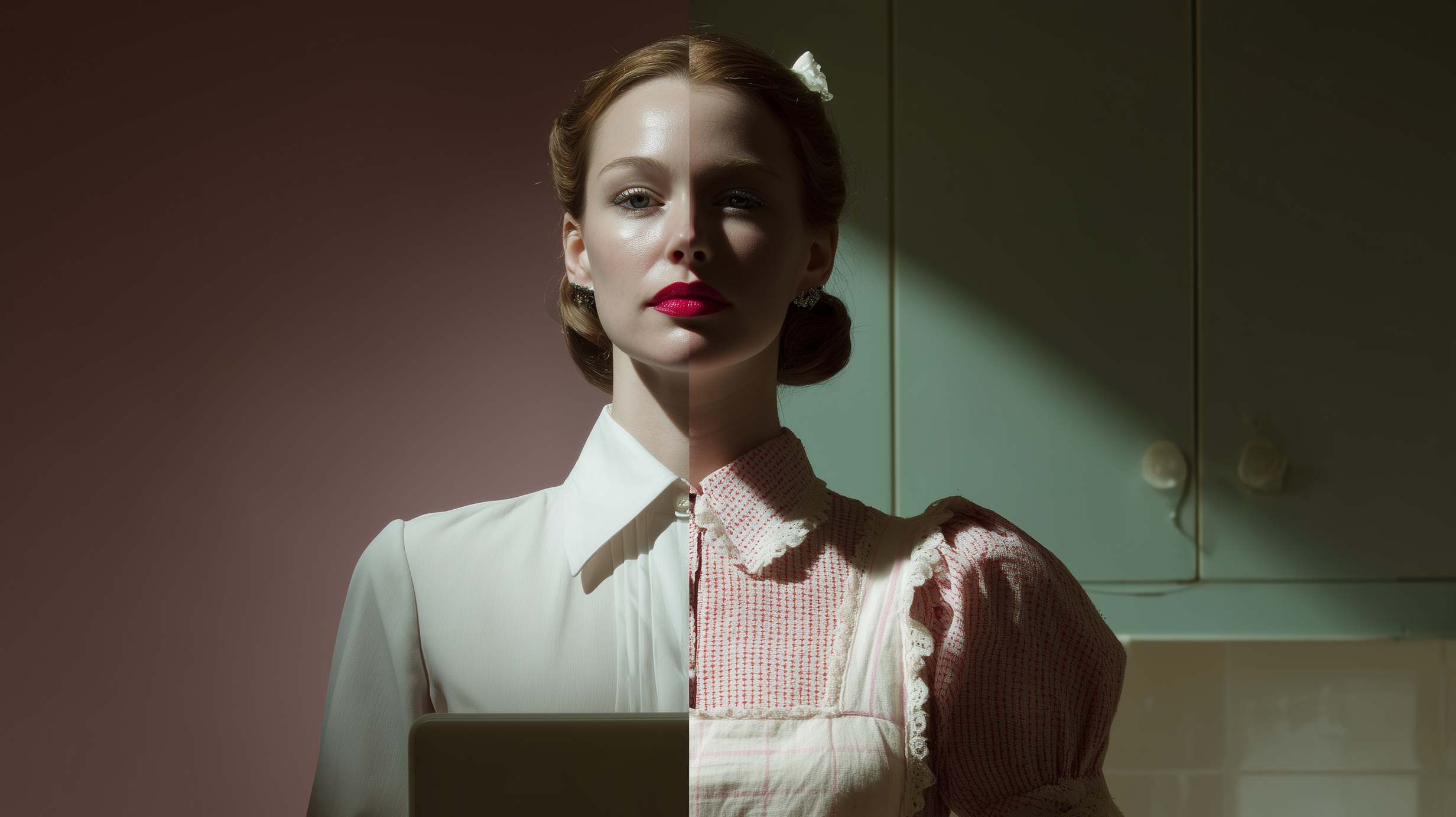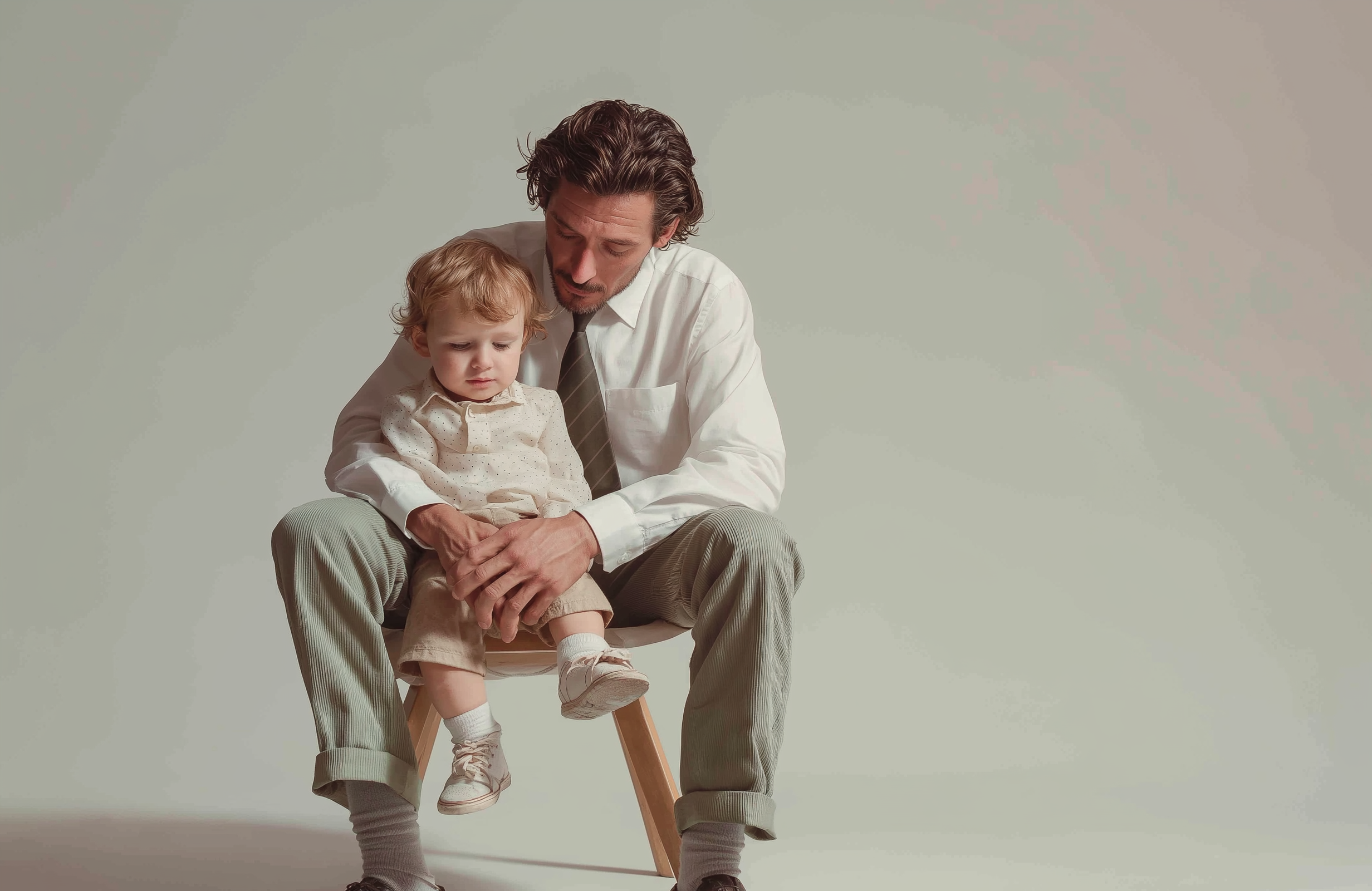Recently, there has been a proliferation of images on social media that look like they have come straight out of the 1950s. Women in aprons, baking cakes, with the declared aim in life to serve their husband. These women call themselves „Tradwives“, short for traditional wives, and celebrate a way of life that many thought was long outdated.
The trend has not only taken root on TikTok and Instagram, but also increasingly in the social debate. What is striking is that the desire for clear role models is not a purely male phenomenon. While men in the alpha-male scene long for dominance and hierarchies, some women are seeking salvation in a return to a life of domesticity and devotion.
Both movements are united by a romanticised retrospective view of a time when the world was seemingly simpler, but not fairer. The Tradwife aesthetic conjures up the image of the loving housewife who knows her place and fulfils it with joy.
What is often forgotten: In the decades to which this longing refers, women had neither economic independence nor legally secured equality. Standing at the cooker was not a choice, it was the only option. Today's staging of this life model ignores systematic discrimination and romanticises an era in which female autonomy was at best tolerated, but mostly prevented.
This is precisely where the problem lies. What comes across as aesthetic nostalgia reproduces a world view in which the distribution of roles is not only favoured, but is once again standardised as the ideal.
One of the most prominent figures in the tradwife scene is Australian influencer Jasmine Darke (@jasminedinis). With around 286,000 followers on Instagram, she actively promotes conservative gender roles. In one of her most controversial videos (over two million views), she states:
“I'm teaching my daughter that it is perfectly acceptable to depend on a man. That being a homemaker is the number one career she should strive for. And that serving her husband and bearing children will be her greatest joy.”
But she is not alone. With over nine million TikTok followers, former ballerina Hannah Neeleman (@ballerinafarm) presents an idyllic version of domestic life on a farm in Utah: linen aprons, sourdough, a $20,000 stove. Another key figure is Nara Smith, who shares her daily life as a young mother and wife through carefully curated videos which accumulated over 700 million likes. In her content, she makes everything from scratch. From handmade pasta and skincare to baby food and home decor. Always with a soft voice and a calm, graceful aesthetic. Her performance of total domestic self-sufficiency, wrapped in beauty and effortlessness, has made her a modern tradwife icon. Together, they embody different variations of the same idea: a return to simplicity, devotion and female traditionalism.
Tradwives often talk about fulfilment, femininity and inner peace. Their statements follow a clear logic. In a world full of self-optimisation and pressure to perform, it is an act of liberation to devote oneself entirely to family and home. This is not about oppression, but about choice.
That sounds harmless, were it not for the ideological baggage many of these accounts carry. Between soft filters and bread recipes, you’ll find disparaging comments about working women, side-swipes at feminism, religious dogma or right-wing conservative world views. These are not exceptions but recurring patterns.
What's more, this content is often consumed by men who see themselves as „Alpha males“ and find confirmation of their own worldview in tradwife romance. In their eyes, the trend is proof that women never truly wanted equality, that they long for leadership, structure and male dominance. The supposedly voluntary return to traditional roles is reinterpreted as proof of a „natural order“ in which men lead and women follow.
This lifestyle fosters a toxic dependence on the husband. Financially, socially, emotionally. What happens when he leaves? Dies? Loses his job?
Many tradwives do not have their own income, savings, pension schemes, or career experience. They unlearn how to survive independently. In the worst case, they find themselves, and their children, without any safety net. What appears as comfort and security can quickly turn into a trap.
And that’s not just unfair. It’s dangerous.
At the same time, the tradwife aesthetic is often used for lucrative self-promotion. Influencers sell being a housewife as a lifestyle brand, offer online courses on ‘feminine energy’, explain in soft voices why true femininity is characterised by submission, and earn thousands per month.
Ironically, their success is built on visibility, monetisation and personal branding, privileges that the housewives of the 1950s, to whom they claim to pay homage, never had.
Earning money with the ideal of financial dependence. That’s not just a contradiction, it’s selective romanticism.
What can be appealing about the tradwife concept?
- A sense of purpose and structure
- Rituals and routines that create emotional safety
- Appreciation of homemaking as a valid and valuable form of care
What makes it dangerous?
- Financial dependence on a partner
- Reinforcement of regressive gender norms
- Idealisation of an unequal and exclusionary past
- Risk of social isolation and disempowerment
But is there a way to take the good and leave the bad? Yes, by making conscious choices. If you enjoy homemaking, that’s beautiful. But make sure it’s a choice, not a necessity. Protect your independence. Maintain your ability to earn. Cultivate skills beyond the household. That way, you can create a life that is nurturing without being narrowing.
Maybe the tradwife lifestyle doesn’t appeal to you at all, maybe a part of it does.
Not because you want to be dependent. But because you’re tired.
Tired of always being strong, efficient, responsible.
Tired of the noise, the hustle, the expectations.
In a world that demands everything from women, career, beauty, care work, confidence, softness, ambition, the idea of simpler roles can feel like a relief. That doesn’t make you weak. It makes you human.
But the solution to this exhaustion is not a return to the 1950s.
It’s a radical rethinking of what life in 2025 should look like.
Because the problem is not women trying to do too much.
The problem is that they are expected to do it alone.
We need a system where care work is shared. Not just between partners, but structurally.
Where men carry equal parts of the emotional and domestic load.
Where raising children, maintaining a household and creating stability is everyone’s job, not just hers.
Where support networks exist beyond the nuclear family.
Where a woman can choose softness without sacrificing her independence.
So instead of romanticising a past built on inequality, let’s ask the real question:
What would a world look like where you can rest, feel safe, and still be free?
That’s not nostalgia. That’s progress.
Intern SheSkillz Global
-
Philine Urferhttp://3.65.75.14/author/philine-urfer/
-
Philine Urferhttp://3.65.75.14/author/philine-urfer/
-
Philine Urferhttp://3.65.75.14/author/philine-urfer/















